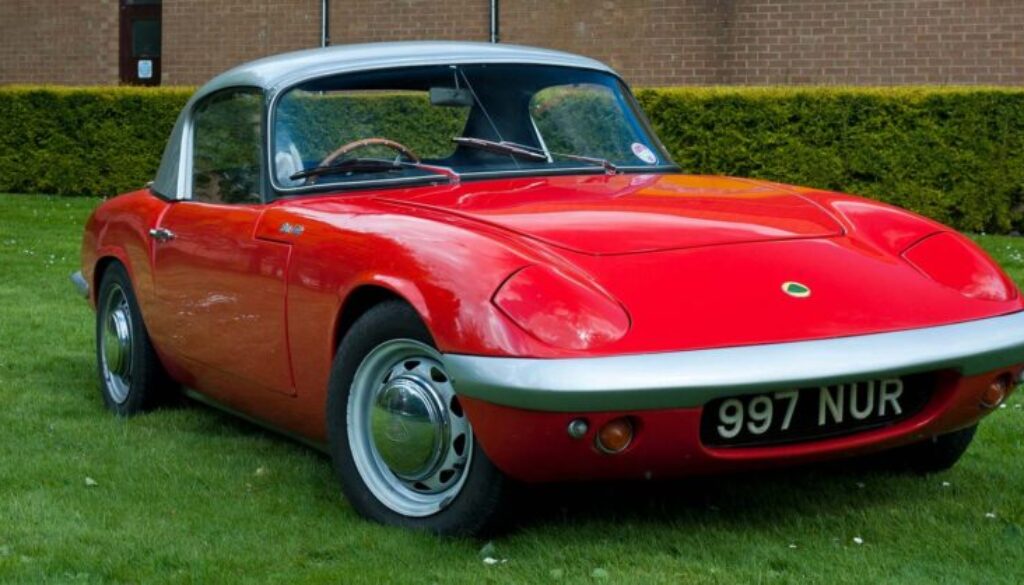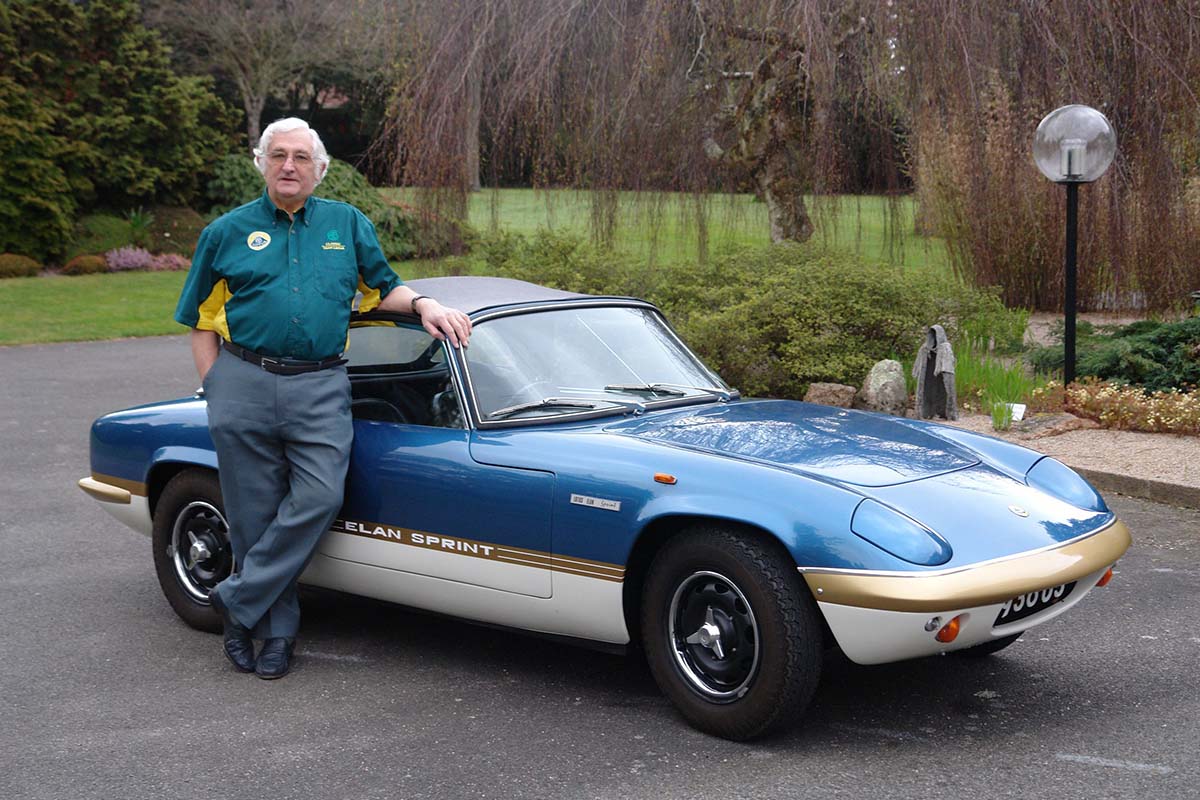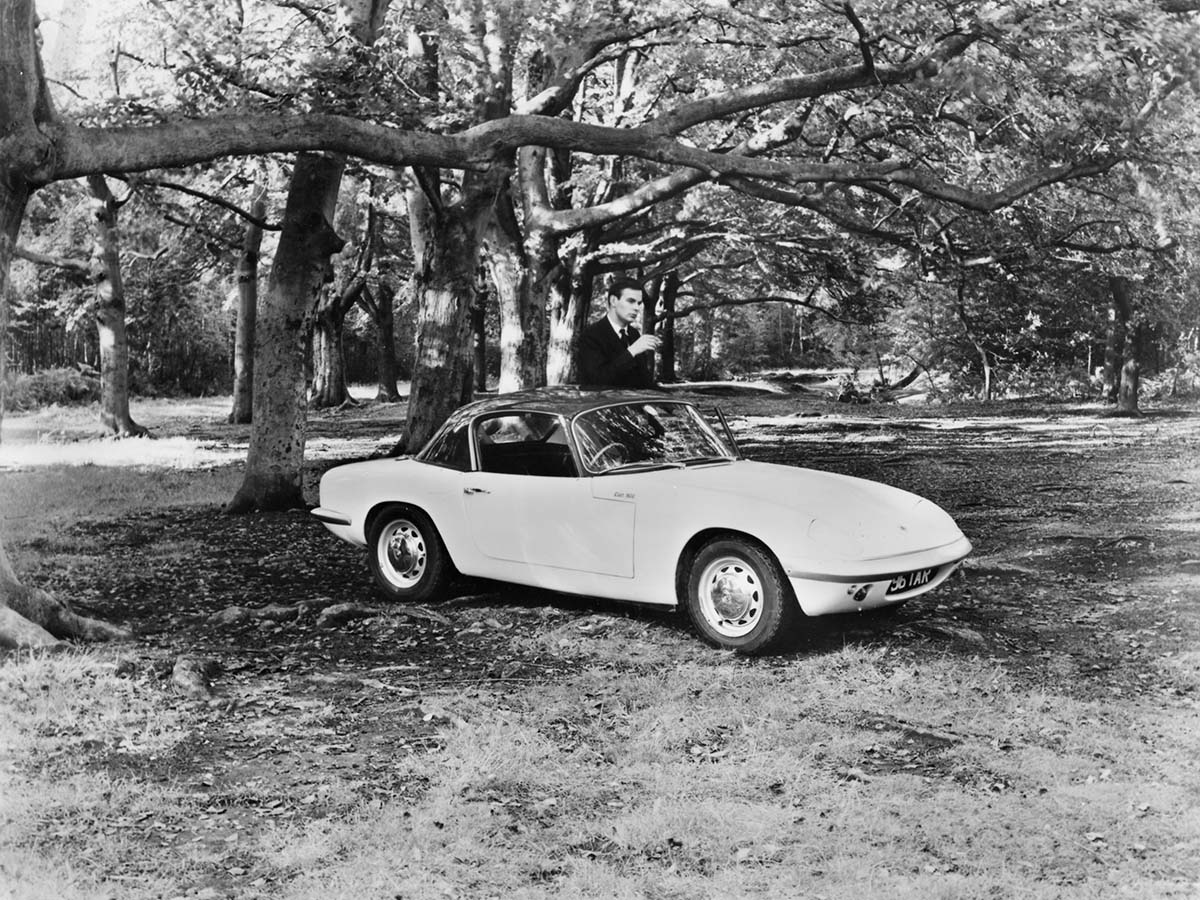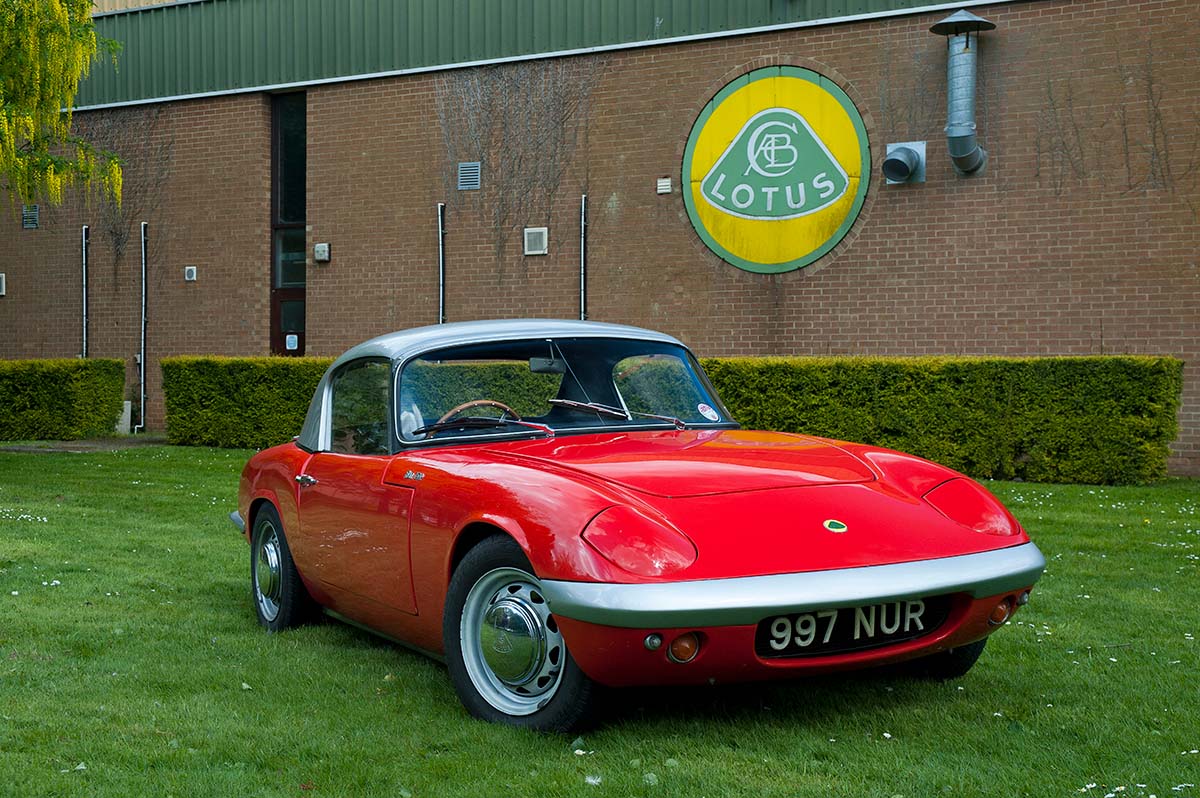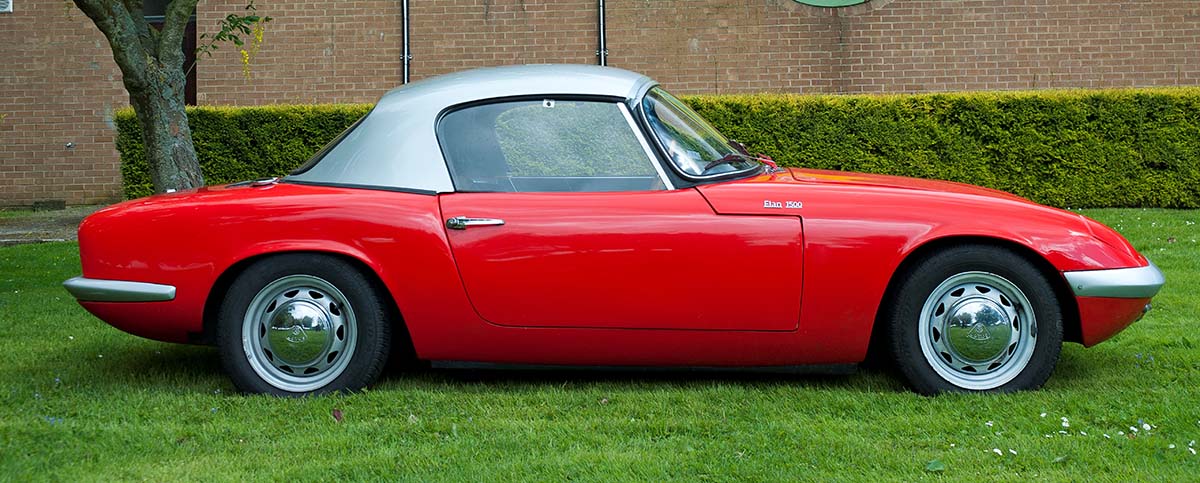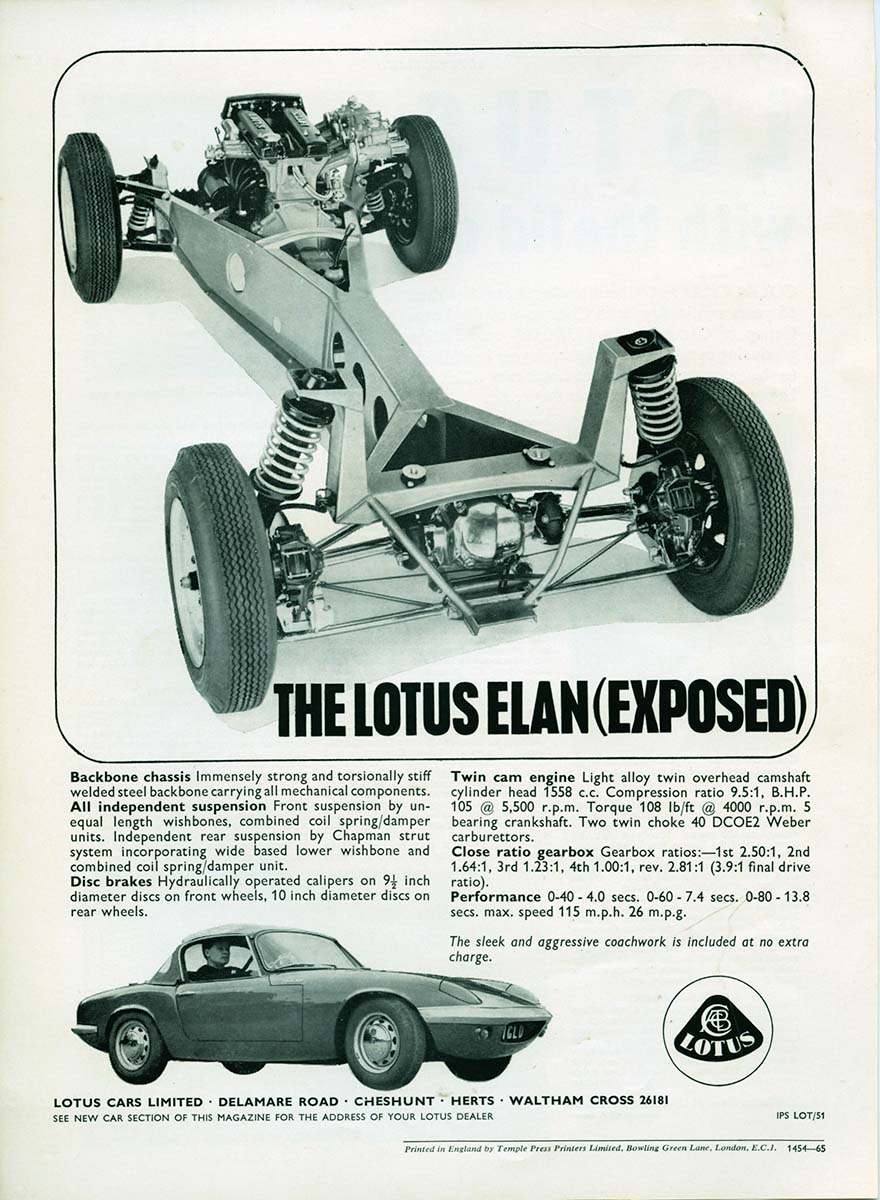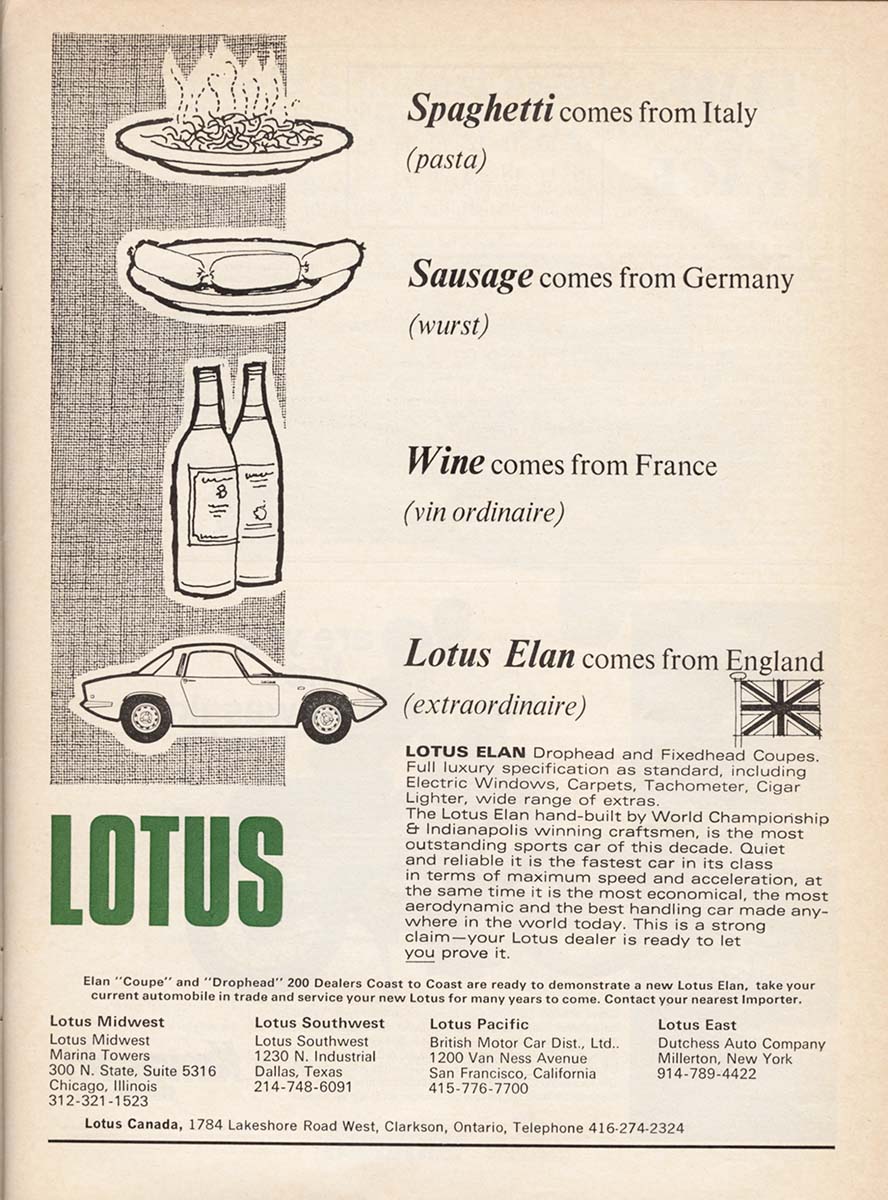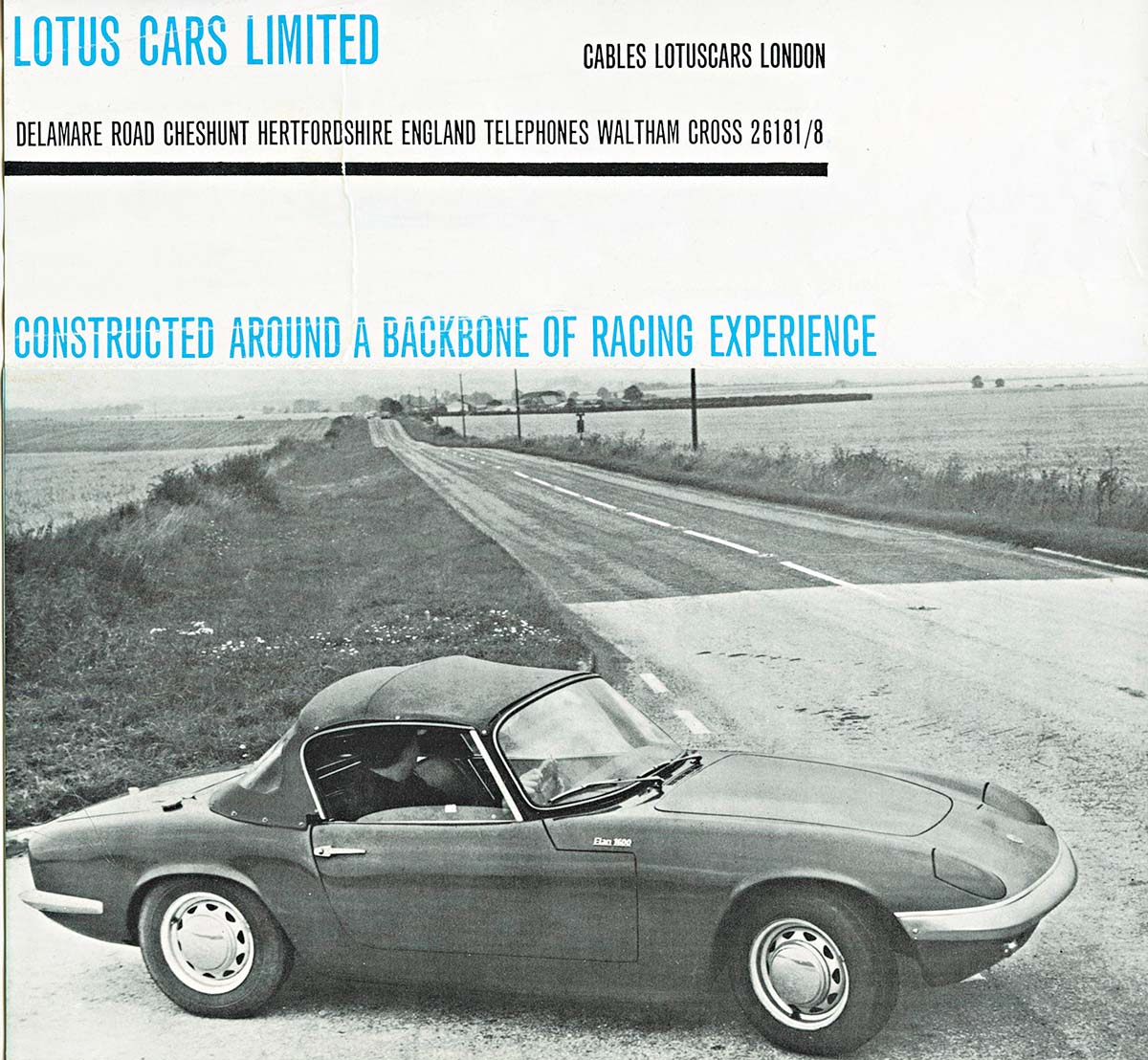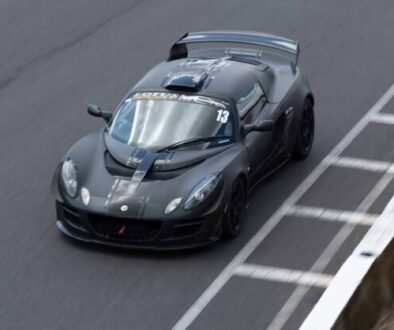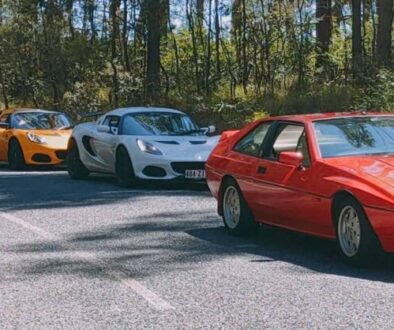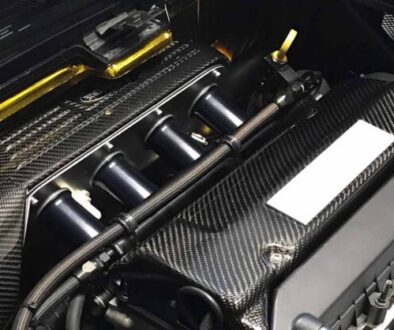60 Years of Magic
Lotus ELAN 1962 – 2022
By Craig Wilson.
When Colin Chapman, Ron Hickman and the team at Lotus were looking at a replacement for the brilliant but expensive Type 14 Elite in 1961, little did they know that they were setting another benchmark which is still revered by the best designers, critics and owners six decades later.
As Gordon Murray CBE said on the McLaren F1 review. The two Elans in his collection are the benchmark on handling, and he nearly achieved that perfection, nimbleness, balance and driving experience in the F1.
The Type 26 Elan was announced at a Press Release with the S1 at the Earls Court London Motor Show – 17 October 1962. Some were available in kit form but cost fully built was GBP 1499.00.
The fundamental structure of backbone folded steel chassis and fibreglass body was half the cost of the monocoque Elite body and the method used for road going Lotus cars through the Elans, Europa, Elite, Eclat, Excel, Esprits up to the change in the iconic Elise and it’s revised structure for the new generation of Lotus.
The Elan was produced in S1 to S4 models with the usual variations of convertible, removable hardtop, FHC and ever increasing performance and styling upgrades of Type 36 and Type 45 in the final S4 Sprint in 1975.
There are also the many competition versions of 26R S1 and S2. This was a lightweight version produced initially to meet increasing factory requests to compete against privateer conversions of Elans for racing. (See story below.)
60 years later, these little race cars are still giant killers in Historic Racing such as Goodwood Revival.
Colin Chapman was very good at product placement and the Elan models featured in many TV series including the Avengers with Dianna Rigg (Emma Peel), Tara King, Peter Sellers and Paul Newman had one, Jim Clark, Jochen Rindt, Graham Hill and the list goes on.
So to all those Elan and Elan Plus 2 owners out there who are one day gunna do it, now is the time. This is the year. Make the effort. Get it out of the shed, open the boxes and go for it.
A big congratulations to Steve Amos who dragged his S4 out of the shed mid 2021 and refurbished it after 10 years. Well done Steve and he still can’t control the smile.
A further big congratulations to Gary Stewart who dragged his Elan out of the shed after at least 25 years during 2021 and completely refurbished all the mechanicals to arrive at the All British Day in style. Well done Gary.
Our hope is that Ian Loxton will make good progress this year on his very big Elan +2 project. Keep at it Ian.
Ian Wright’s S3 Elan is on the way – another Ian with an Elan project.
So there are a few on the go and if you know someone who has one, who needs a prod or some support, let them know there are plenty of people around to lend a hand.
We have at least 12 Elans and +2s on the road in Queensland and that could grow with a bit of encouragement. We would also like to see some magazine articles throughout this year on your Elan, its life, restoration and ownership so share those stories.
A 60 year celebration is in planning for later this year so there is plenty of time to join the Elan team.
TYPE 26 Elan S1 and S2
Contribution by William Taylor, Creative Director of Coterie Press
By 1961 it was clear that for Lotus to remain profitable, it was the Elite which had to be supplanted. As such, the Elan became more up-market. Overall, its design had less of the Elite’s uncompromised feel and far more regard for production viability and costings.
The simple, deep backbone chassis was of 18swg steel with local 16swg stiffening and weighed a mere 75lb. It measured 11.5 inches by 6 inches at the centre (which doubled up as a propshaft tunnel) and each end of the chassis forked out into narrower sections. Cross-members and turrets at the front cradled the engine, gearbox, steering and suspension, and the rear housed the final drive and suspension.
The body, designed by Ron Hickman, was moulded in two main glassfibre sections (floorpan/arches and upper body) which were then bonded together. Steel strengthening for the door jambs and screen pillars made it sufficiently rigid to not rely on the chassis for its strength. Clean aerodynamics suggested a pop-up headlamp arrangement, which was worked by vacuum cylinders. The front and rear bumpers were made of plastic and filled with polyurethane foam.
Chapman wanted a twin overhead camshaft engine for the Elan and turned to Harry Mundy of The Autocar magazine. Mundy, formerly with BRM and Coventry Climax agreed to develop a DOHC head. Preliminary work was on the 3-bearing 109E block, until the Ford 116E 5-bearing block became available. The alloy heads were initially made by J.A. Prestwich, and then by Lotus itself.
As announced, the Elan engine displaced 1,499cc and was basically a detuned version of the same unit that had powered the Lotus 23 earlier in the season. The head, pushrods, timing cover and water pump of the original OHV engine was discarded, and Lotus fitted its own aluminium DOHC head. However, the 100bhp engine was quickly superseded by a definitive 1,558cc, 105bhp version with twin Weber carburettors. Dellorto or Zenith-Stromberg carbs would be fitted later.
The interior, accessed by wide-opening doors, seated two, on well-shaped adjustable seats mounted on an inclined floor. The steering column was adjustable for reach by concentric tubes, designed for crash collapsibility. The fascia panel was of nineply, wood faced with teak and housed four gauges. The boot was generous for a sports car and under the floor sat the spare wheel and 10-gallon fuel tank. The windows were of the manually operated, sliding type, rather than having a bulky winding mechanism, (which wouldn’t fit in the tight confines of the door).
Initially launched in convertible form only at the 1962 Earls Court Motor Show, the price was £1,495 fully built or £1,095 in kit form. From May 1963, when the larger engine was standardised, a removable hardtop became an optional extra.
The Elan quickly gained a reputation as an ultra-responsive, balanced, and quick little car. The Elan attracted over 2,000 customers in its first three years and its success almost certainly saved Lotus from an early demise.
A revised Elan S2 arrived in November 1964. It had several small improvements like larger front calipers, full-width polished veneer dash with a lockable glovebox, quick-release filler cap and new rear lenses. The option of centre-lock wheels was offered in place of the original bolt-on type.

